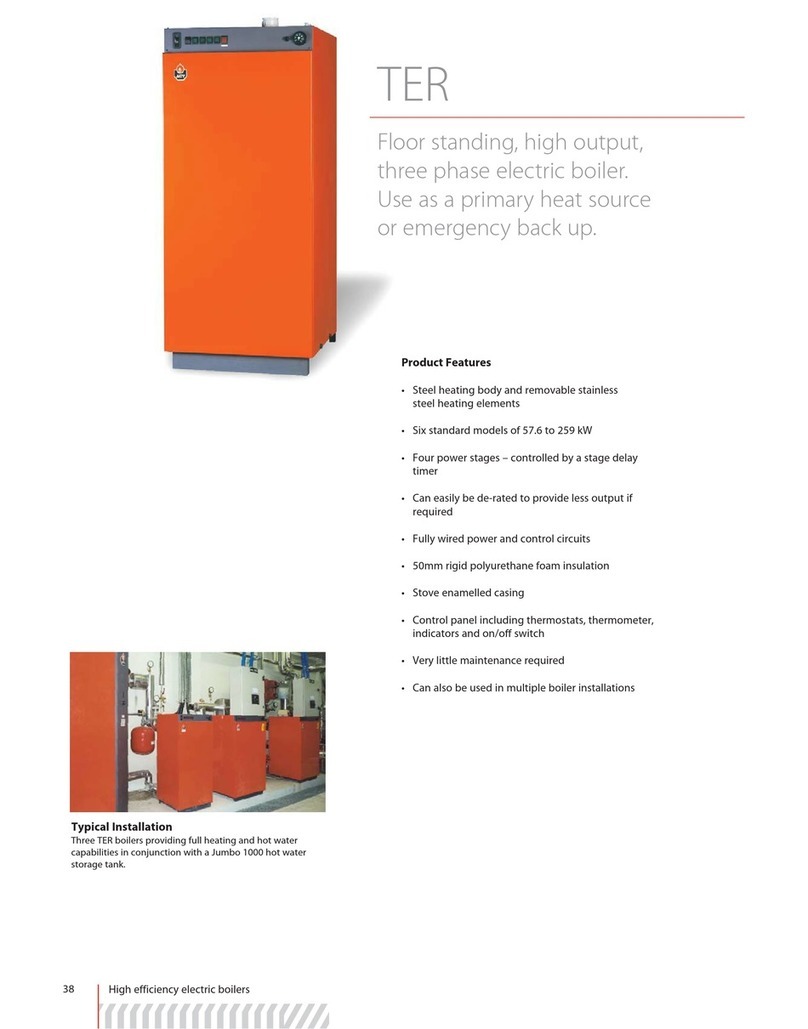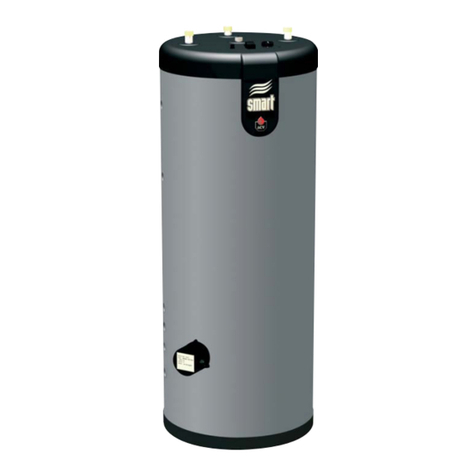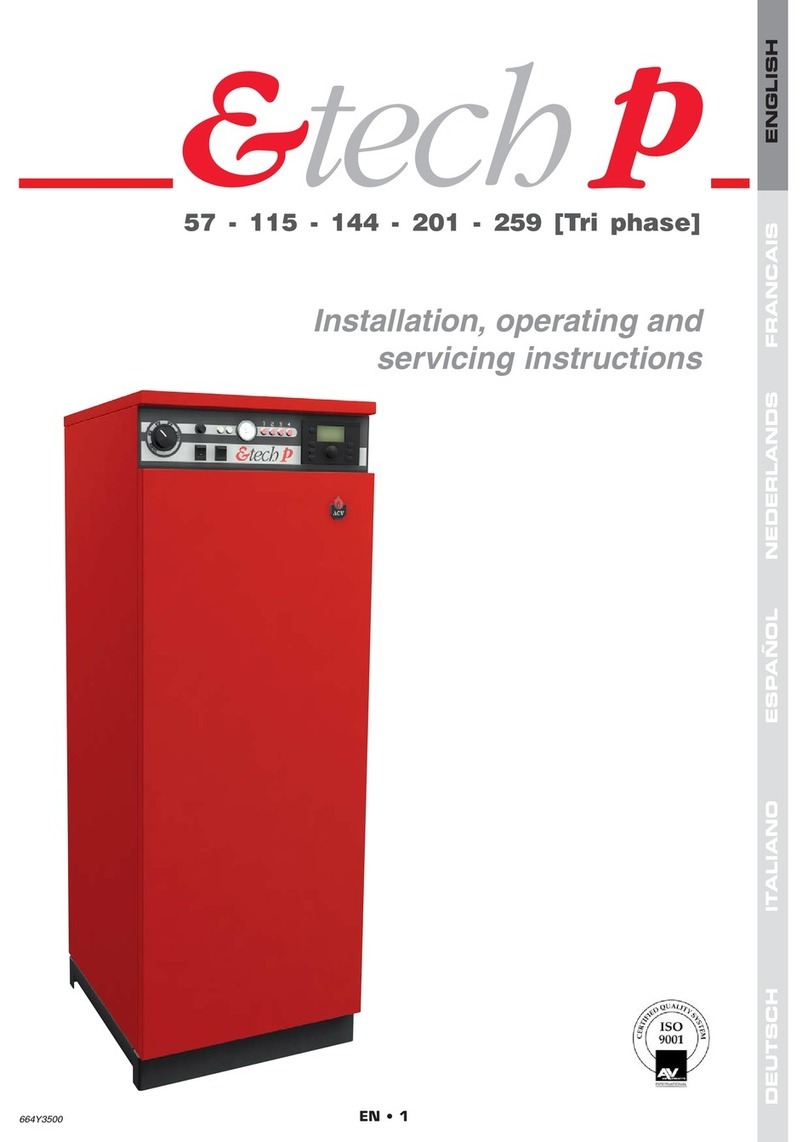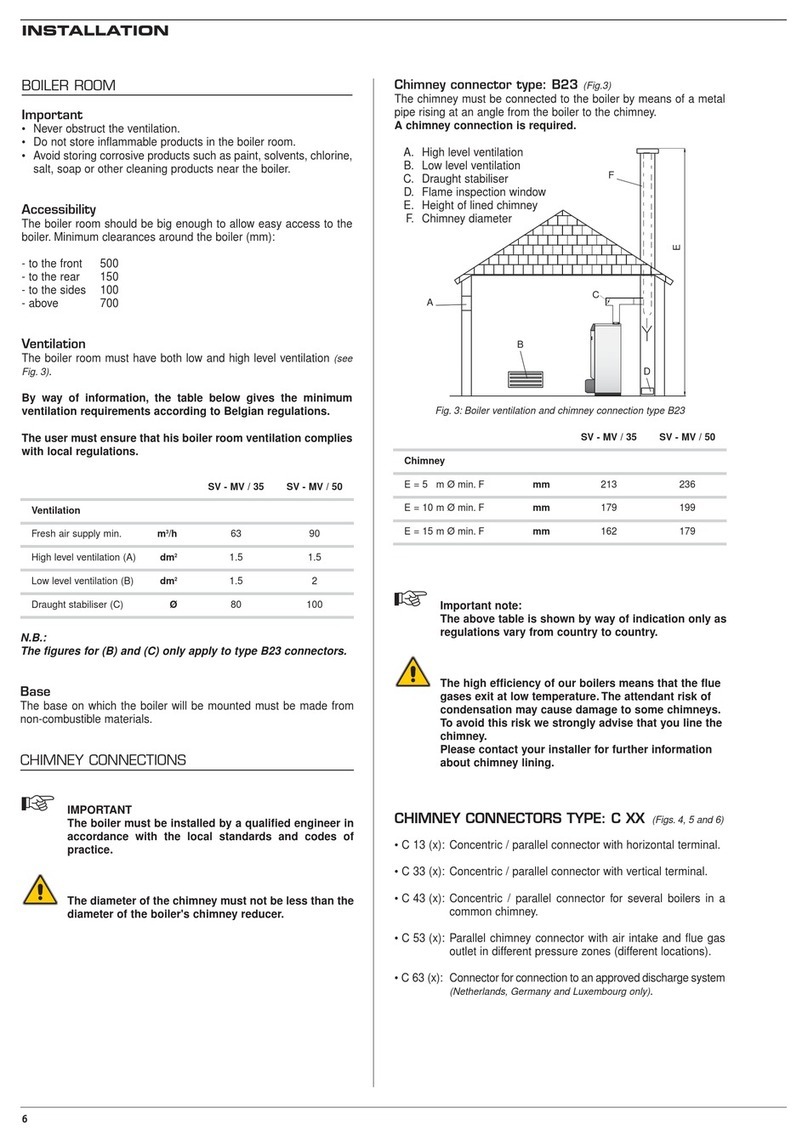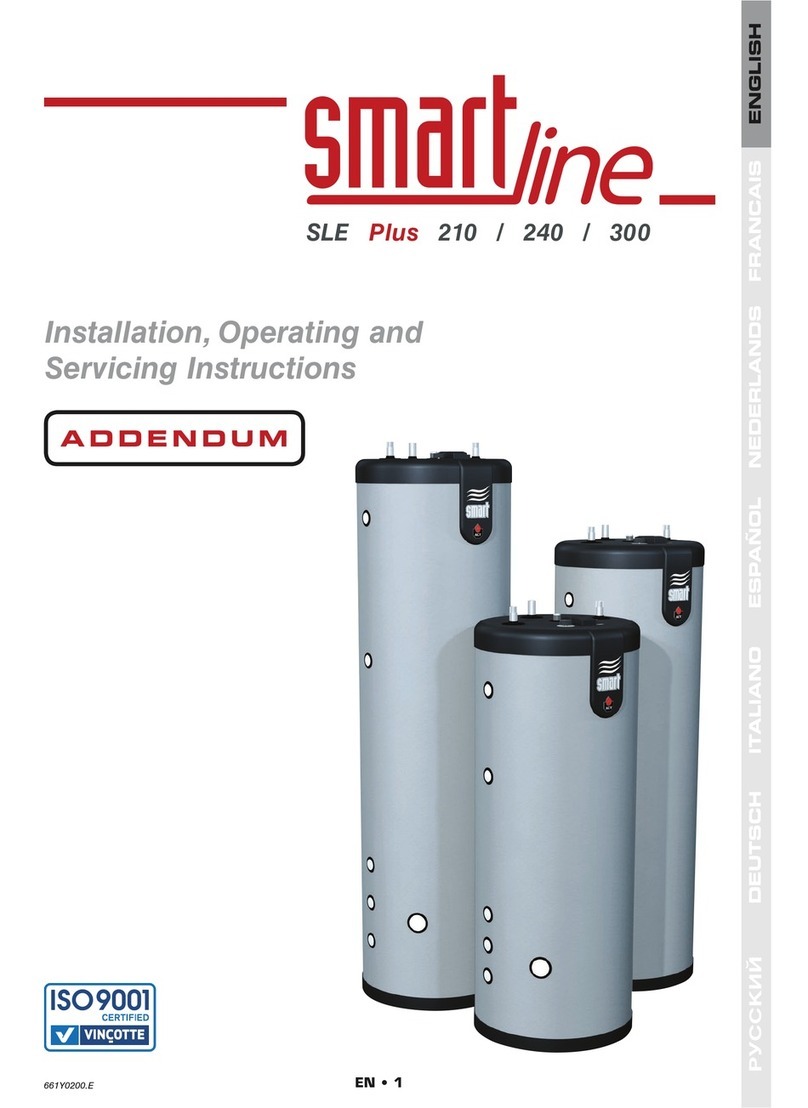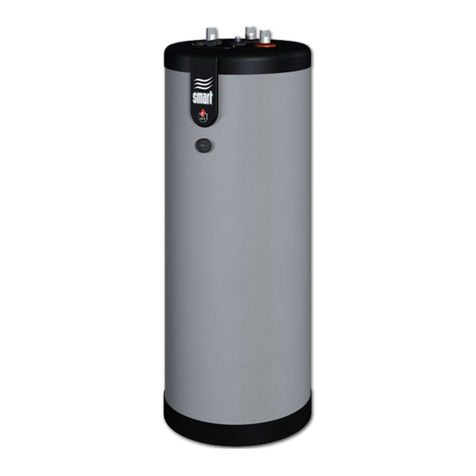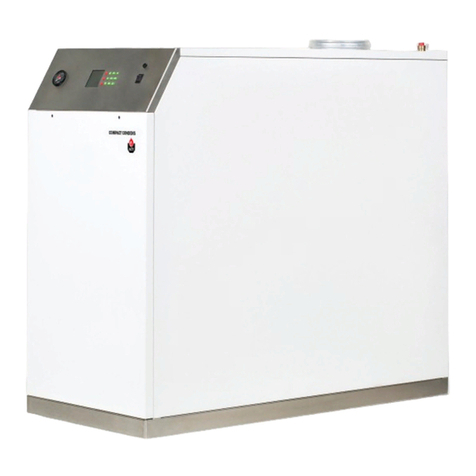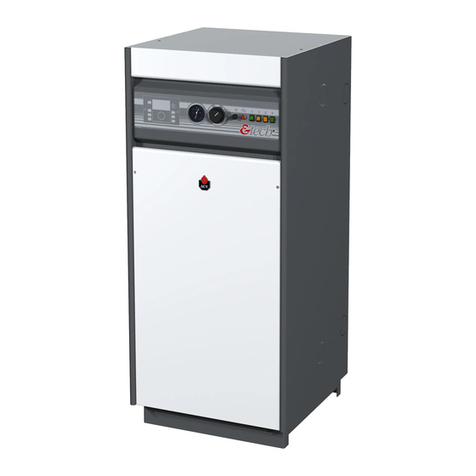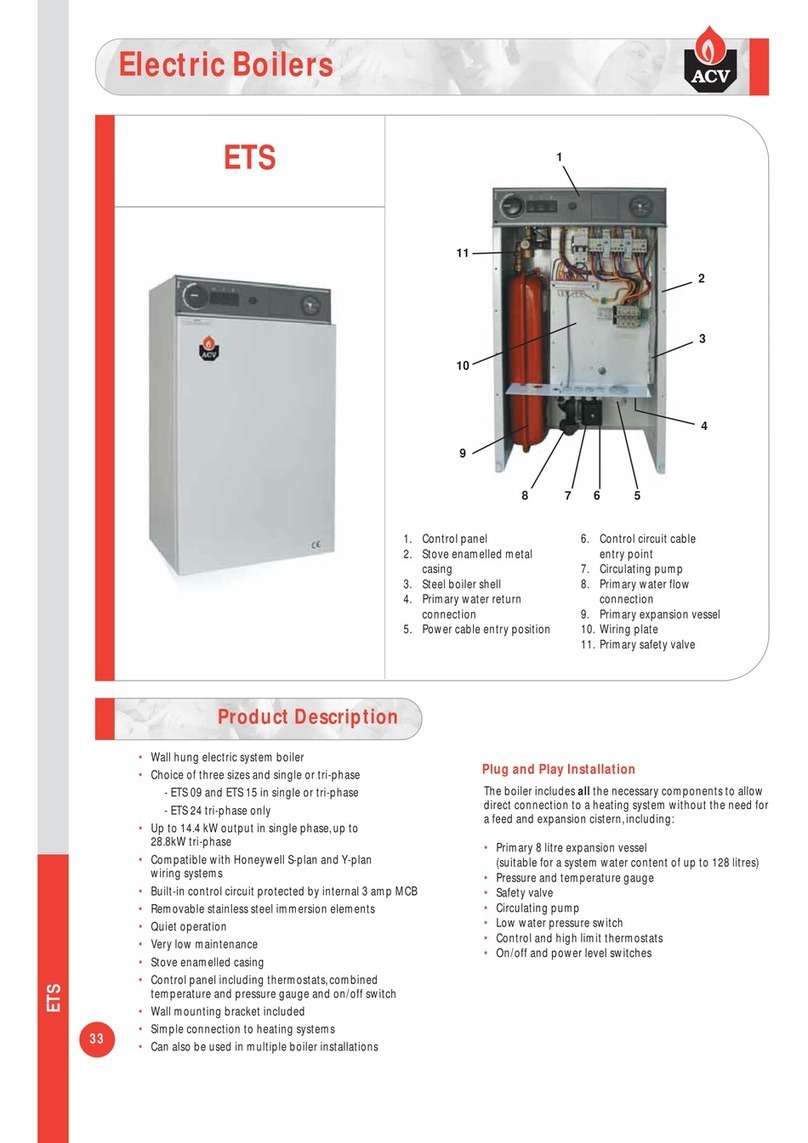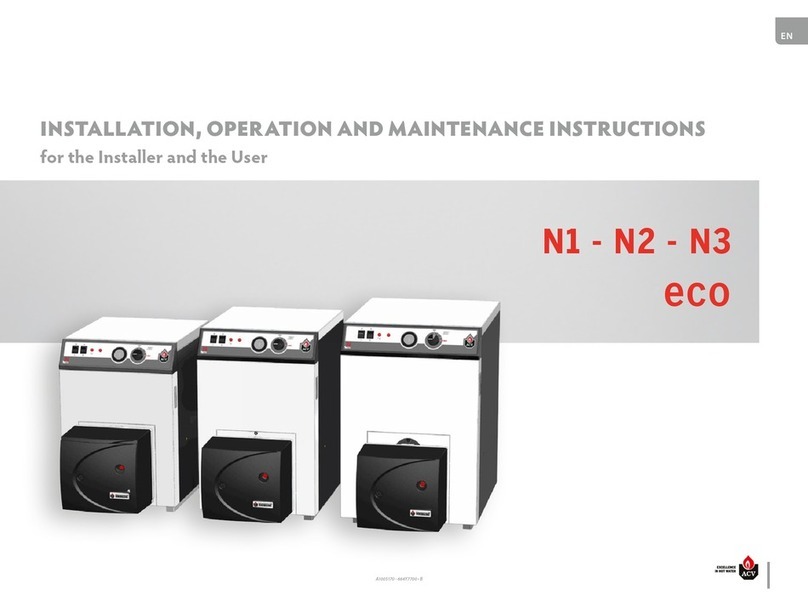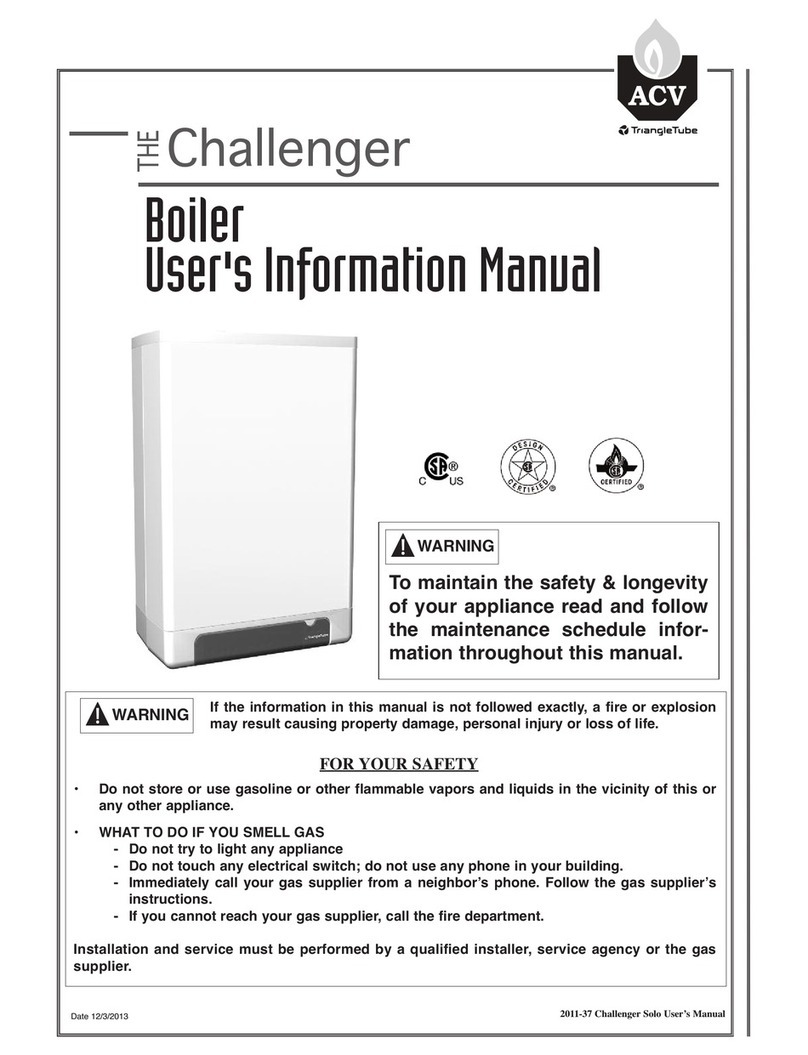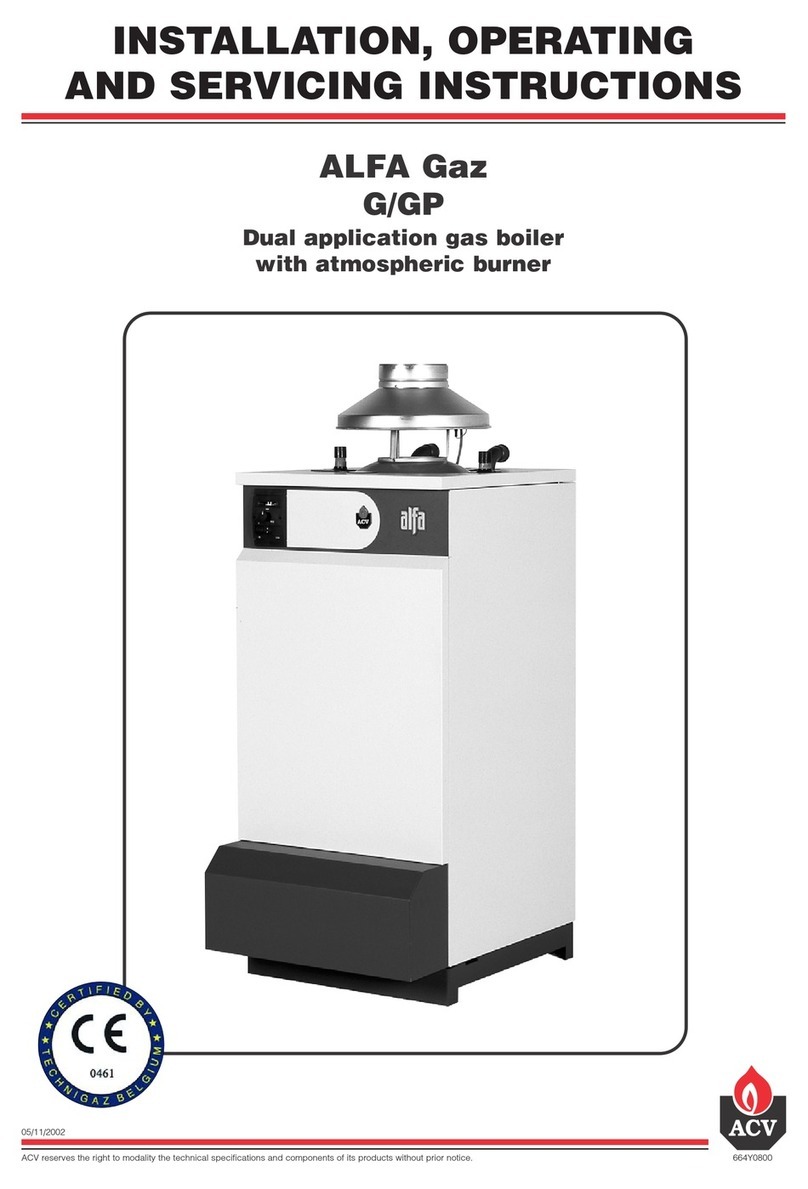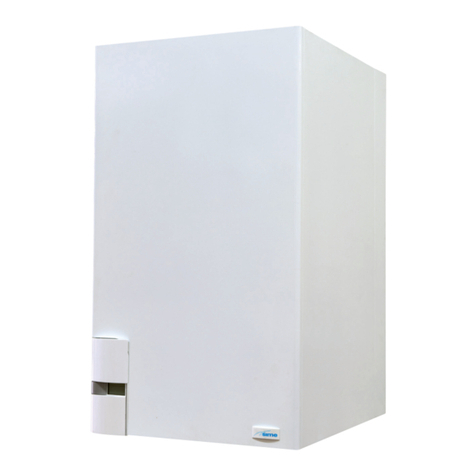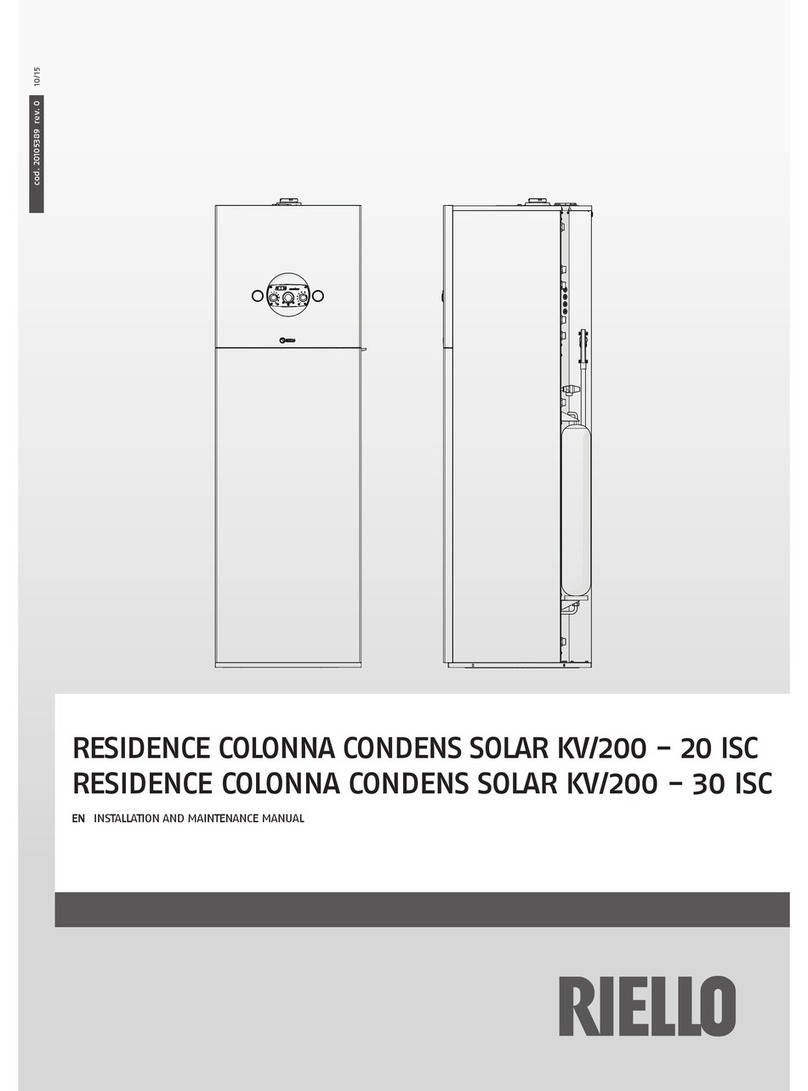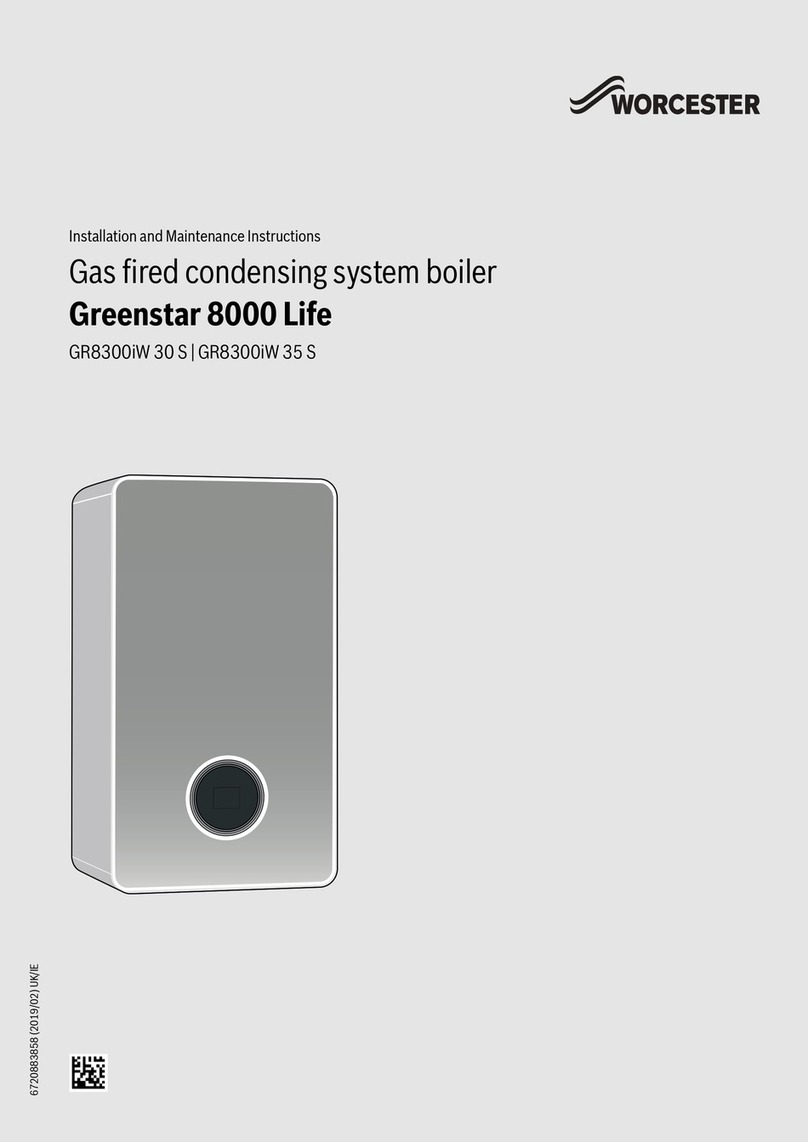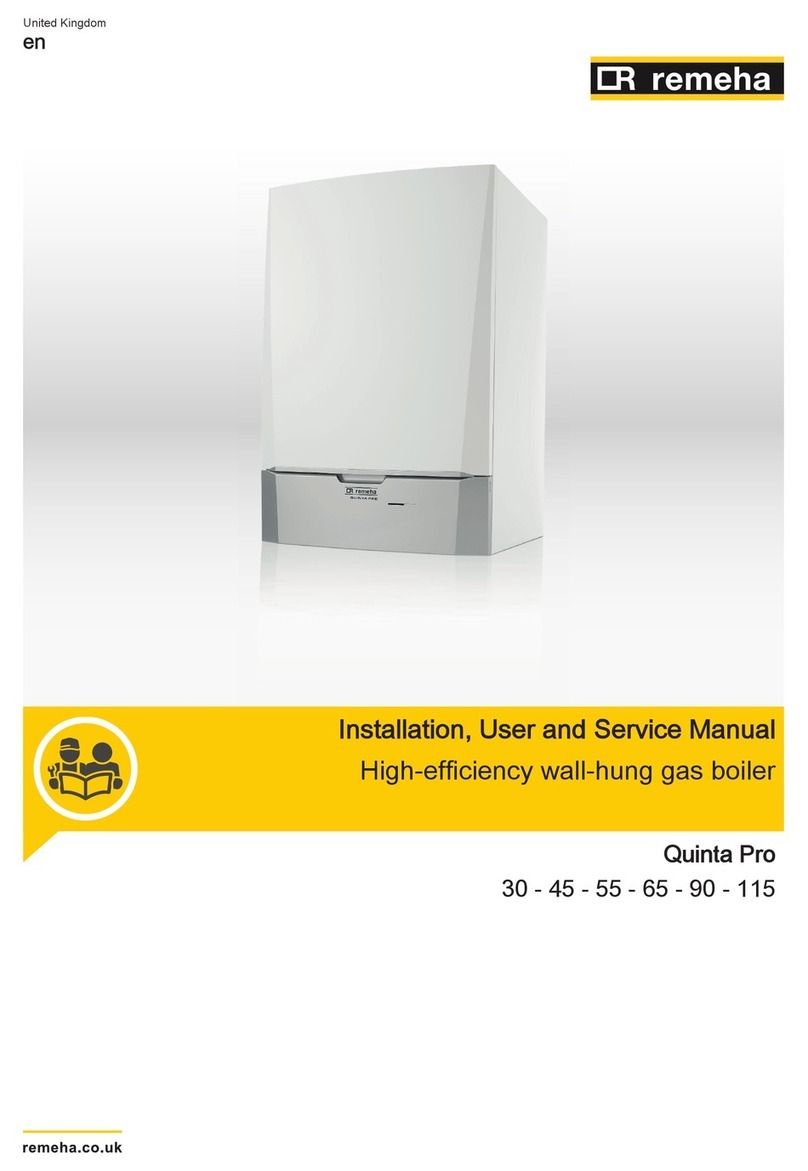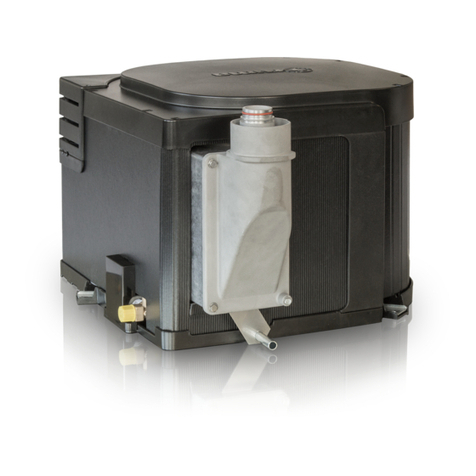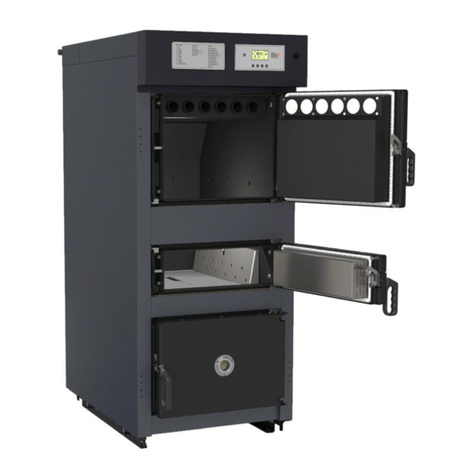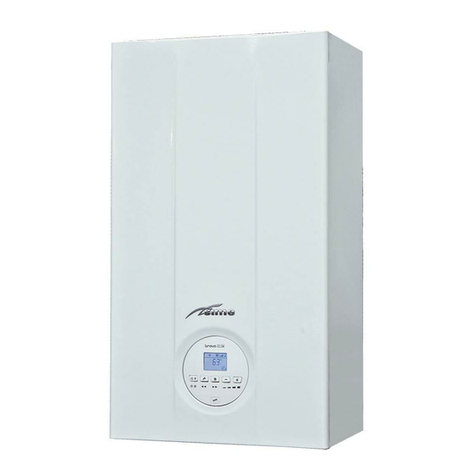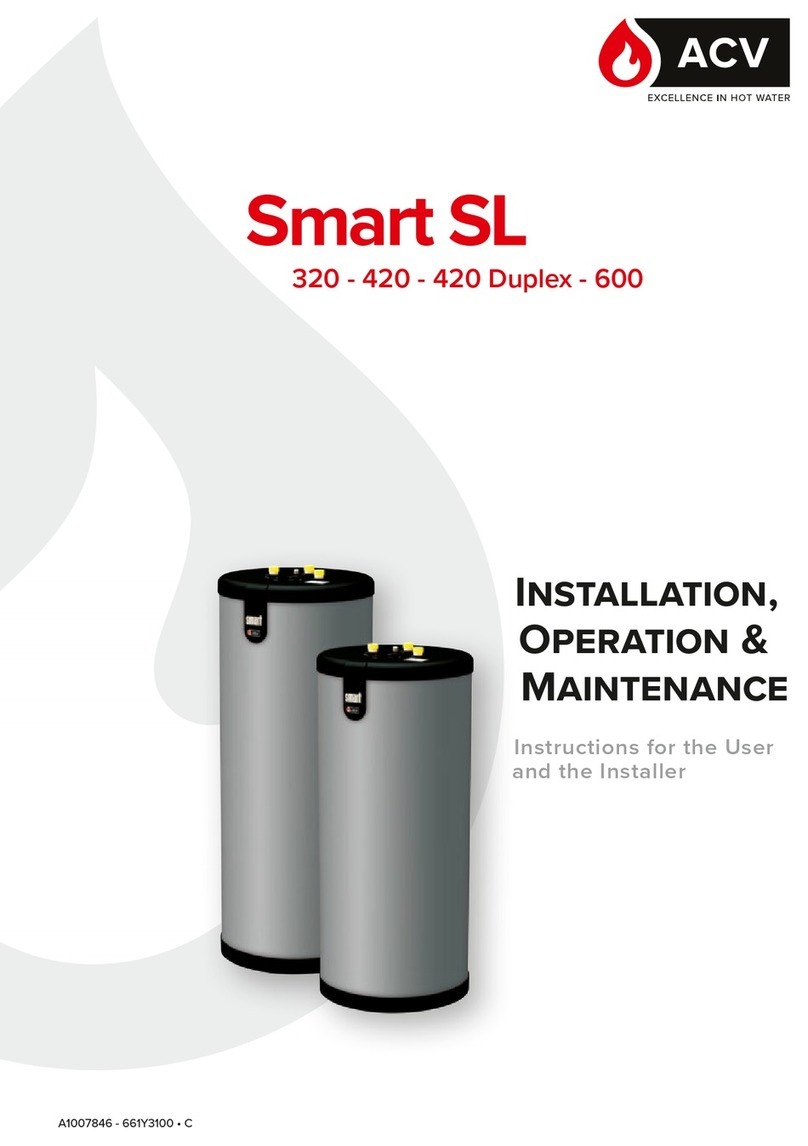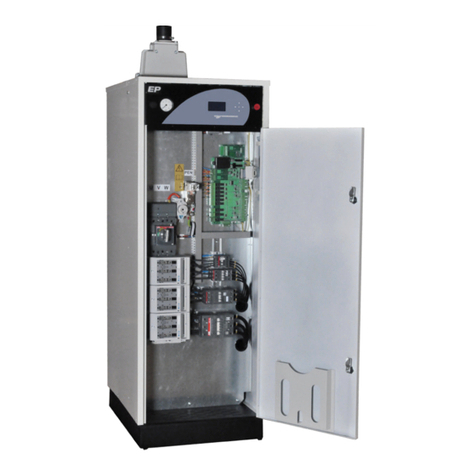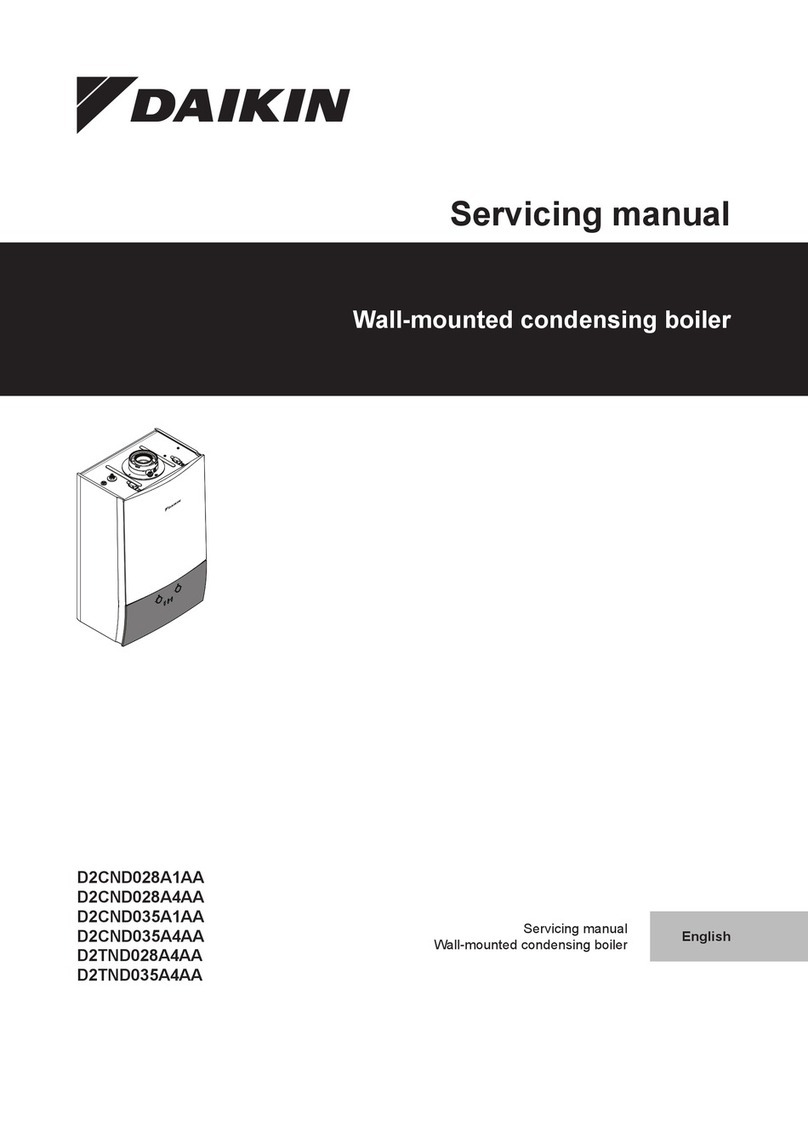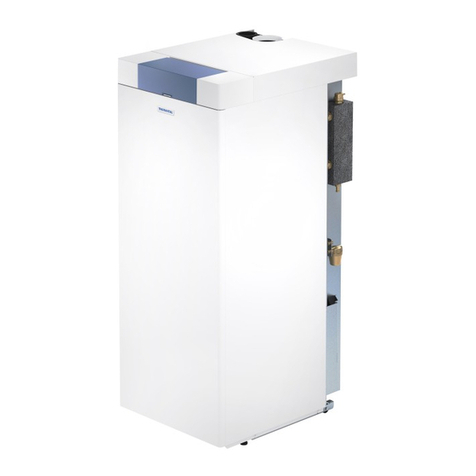7.1 USING THE BOILER
7.1.1 LEARNING YOUR WAY AROUND THE CONTROL PANEL
(FIG. 13)
Before carrying out any work on the boiler, switch
the power off at the mains switch fitted in the
boiler room by the electrician.
1 - ON/OFF switch (item marked 1, Fig. 13)
This must be used to switch the boiler off before carrying out any work
on it.
2 - Power selection switches (item marked 2, Fig. 13)
The control panel is fitted with two switches allowing the user to select
the boiler power according to his needs.
When only the first switch is pressed down, the boiler power is limited
to the first stage using +/- half of the power (ideal in summer). In order
for the boiler to run at full power, both of the switches must be pressed
down.
To run the boiler at full power at peak rate times, you
must activate the Booster (see point 5 below).
3 - Summer/Winter selector switch (item marked 3, Fig. 13)
“Winter” position: provides both domestic hot water and central heating
functions.
“Summer” position: The central heating circulator is switched off. Only
the domestic hot water function is provided. If there is not enough hot
water available, we recommend setting the thermostat (9) to a higher
value.
When the weather turns cold again, simply select “Winter” to reactivate
the heating system..
4 - Onpeak (item marked 4, Fig. 13)
This indicator shows whether the boiler is on day or night rate.
On cheap rate (at night): the boiler runs at full power and stores up
water at the temperature set on the control thermostat. In this case
the light is unlit.
On peak rate (during the day): The boiler is controlled by a
non-adjustable minimum thermostat (60 °C). If the temperature
drops below 60°C, the boiler starts up at low power.
5 - 1 hour Booster switch (item marked 5, Fig. 13)
This button allows the user to push the boiler up to full power for a
limited period of one hour by activating the second power level at
peak rate (during the day). To do this both of the power selection
buttons must be pressed down. At cheap rate times (at night) this
button does not do anything.
6 - Booster indicator light (item marked 6, Fig. 13)
This light shows whether the boiler is in Booster mode or not.
7 - Controller (item marked 7, Fig. 13)
Please see the enclosed instructions if you have chosen this option.
8 - Mano-thermometer (item marked 8, Fig. 13)
Reads the boiler primary circuit (central heating) temperature and
pressure directly.
9 - Thermostat adjustable between 60 and 85° C
(item marked 9, Fig.
13)
Central heating systems are generally designed to operate at a
maximum of 80° C. When used at lower temperatures, a 3-way mixer
valve installed on the heating flow pipe (see Fig. 2b on page 3) allows
the temperature to be set manually or, if you decide to install a
regulator (§ 2.2.4), automatically.
We recommend that you set the thermostat to the maximum values to
get the best out of the domestic hot water system.
There is a risk of burns from hot water!
The water stored in the domestic hot water tank in the boiler can be at
a very high temperature.
In all cases, install the thermostatic mixer (Fig. 3b on page 4) on the
domestic hot water flow pipe which must not exceed 60° C.
A mixer or mixing valve at each point of use is recommended.
10 - Safety thermometer (item marked 10, Fig. 13)
When the temperature in the boiler exceeds 103°C, the manually
reset safety thermostat is started up.
11 - Boiler shutdown indicator light (item marked 11, Fig. 13)
This light is lit when the safety thermostat starts up or when the water
pressure in the boiler is too low.
7 USER GUIDE
Fig. 13: Control panel
12
7.1.2 CENTRAL HEATING SYSTEM GAUGE PRESSURE
Your boiler is fitted with a central heating safety valve, set to 3 bar, and
with a pressure gauge.
First make sure that the water in the system is still pressurised. When
cold and after the air in the system has been bled, the pressure gauge
should show a pressure of between 1 and 2, depending on the height
of the building: (1 bar = 5m / 1.5 bar = 10 m and 2 bar = 15 m).
To add water, open the filling valve (Fig. 2a and 2b on page 3).
Make sure that the drain cock is properly closed after filling and
isolate the filling circuit from the central heating circuits. Bleed the air
in the system to get an accurate water pressure reading.














